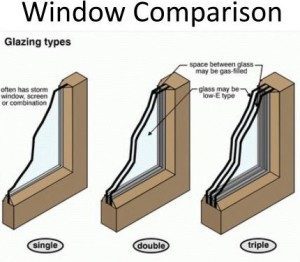Single glazed windows are typically the least expensive to repair; you have one layer of glass to replace compared to two or more layers in insulated glass products.
Relative to all other glazing options, single-glazed with clear glass allows the highest transfer of energy, (i.e. heat loss or heat gain depending on local climate conditions), while permitting the highest daylight transmission.
Single Glazed vs Double Glazed: What’s the Difference
A single glazed window is constructed using a single pane of glass. This means that the only thing separating your home from the outside environment, is that single pane of glass. Typical window glass ranges from 3mm to 10mm, which doesn’t provide adequate insulation.
A single glazed window can be up to 20 times less efficient than an insulated wall when it comes to energy loss or storage.
Double glazed windows utilize two separate pieces of glass, separated by an insulated air spacer . The air spacer acts as an insulative barrier. Hence, when the barrier or air space breaks the window will build up condensation and sweat. The window has then failed and the glass needs to be replaced.
 Call us today
Call us today 
